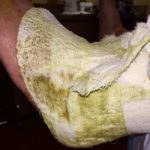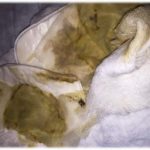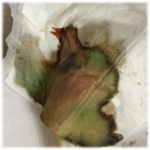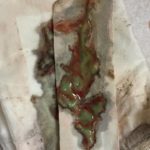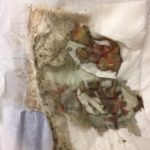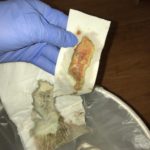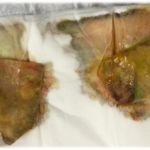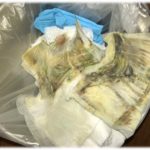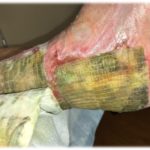Last week my iPhone spontaneously created one of those “bursts” – you know what I am talking about – “This time last year,” which would have been so sweet, except it was a series of saturated dressings ranging in color from green to brown that looked like it came out of the nose of a preschooler. After 30 years I’ve started to take fewer photos of the patients’ wounds, and more photos of their used dressings. I learn a lot from the used dressings (e.g. whether it was the product I ordered – which it often isn’t, whether it slipped, didn’t manage the drainage, was put on backwards – which happens more often than you think, etc.).
US Wound Registry data shows that absorptive dressings are ordered 80% of the time, because 80% of the time the wounds have moderate to large drainage. Noridian has launched a targeted probe and educate directed at the Durable Medical Equipment (DME) companies pertaining to the alginate dressing category because they are ordered so often. The problem is, even in wound centers, the dressings ordered for a wound follow the surgical dressing policy guidelines about 55% of the time (meaning, if an alginate is ordered, the wound is documented as having moderate to large drainage). That means the DME companies are at risk of having to payback a lot of money to Medicare if they don’t have appropriate documentation. Intellicure programmed the surgical dressing policy into its OrderTrak to ensure that all DME orders complied with the policy, thus protecting the patient and the DME company.
I decided to create my own “walk down memory lane” photo burst. This is just an average Wednesday. Nearly all of these are antimicrobial dressings – which is scary, and half of these patients are getting systemic or topical antibiotics. We could ask the patients about their wound related quality of life – except that CMS rejected that quality measure in 2016. Quality of life data on 400 patients with wounds were never analyzed. I am pretty sure that controlling smelly, green drainage is a quality of life issue, but it will be hard to prove that without measuring quality of life.
Brett Carroll, CEO of Preston Wound Care, wrote a great commentary on the topic for Today’s Wound Clinic.
We ARE missing something here. I look at these photos a lot and I wonder – what is it?

Dr. Fife is a world renowned wound care physician dedicated to improving patient outcomes through quality driven care. Please visit my blog at CarolineFifeMD.com and my Youtube channel at https://www.youtube.com/c/carolinefifemd/videos
The opinions, comments, and content expressed or implied in my statements are solely my own and do not necessarily reflect the position or views of Intellicure or any of the boards on which I serve.



